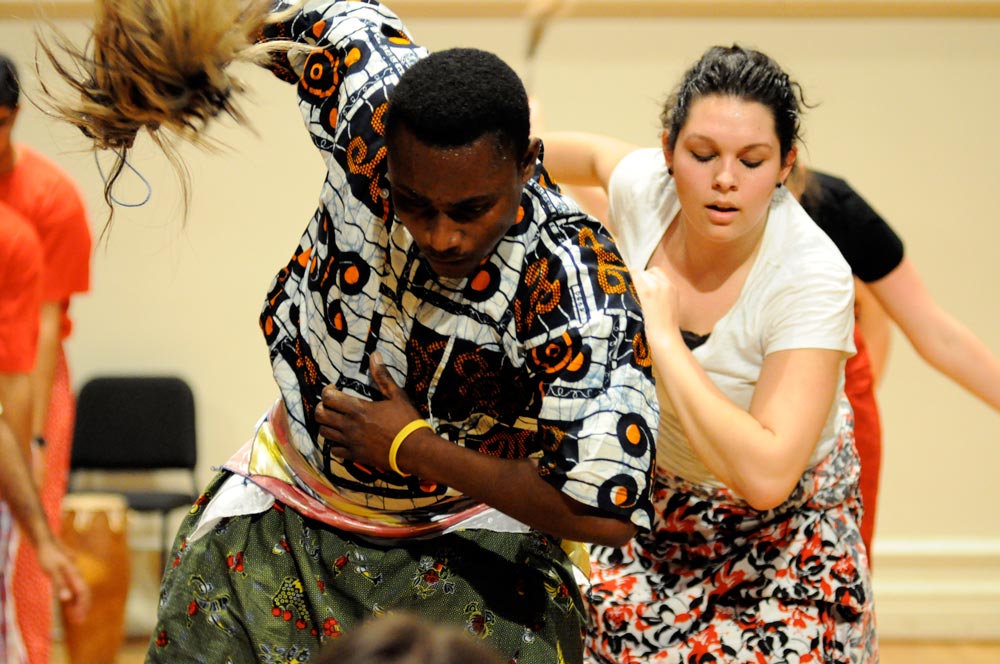Music From Africa
Ensemble brings African music and dance to UVA
In the rainforest of the Central African Republic, BaAka people sing a Gano, or folktale, about how the caterpillar became itself by angering Komba, the creator. The many singers spontaneously invent variations on the song’s theme, some of their voices coming together in parallel lines with moments of harmony and counterpoint, while others depart in new but complementary directions.
In a classroom in Old Cabell Hall, members of the UVA African Music and Dance Ensemble sing the same Gano, improvising upon the theme that has been transported from one continent to another. Ethnomusicologist Michelle Kisliuk, an associate professor in the music department, calls out in the BaAka language and 40 singers reply, some voices low and others yodeling.
Students in the ensemble learn the polyrhythms of African music, the dance movements that respond to each drum call, and about the cultures and practices surrounding the music and dance. At the same time, they learn to practice spontaneous expression through stylized music and movement.
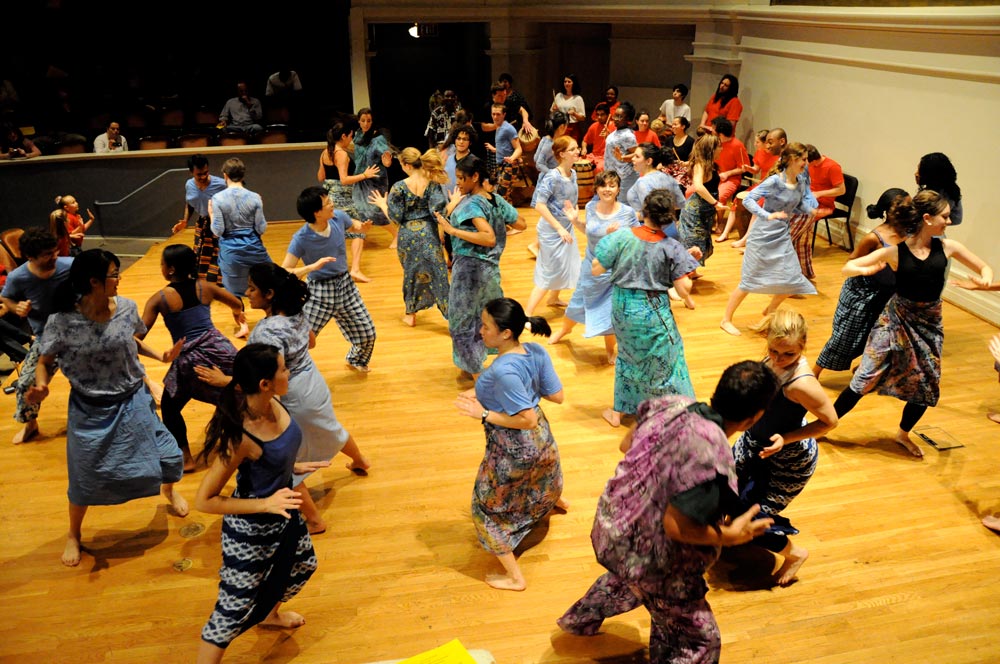
“Ms. Kisliuk teaches in the traditional African way—by example only,” says Elliott Burris (Col ’11). “We learn the dances, songs and drumming without any sheet music or instructions. Everything we do in the ensemble has a deep cultural purpose within the territory of its origin, so she makes sure we know enough about those cultures to preserve and translate those purposes.”
Each semester, students with varying levels of experience—from complete novices to those who spend multiple semesters in the ensemble—audition for the opportunity to learn traditional music and dance from West Africa, specifically Ghana and Togo (Ewe people), and Central Africa (BaAka people). “I also teach an accompanying seminar course that explores in greater detail different African cultures and the ethnographic importance of music and dance in those societies,” says Kisliuk. “Research, writing and discussion of an array of pertinent issues—for example, about race, colonialism and about representation and interpretation in performance—are good complements to the more practical emphasis of the ensemble.”
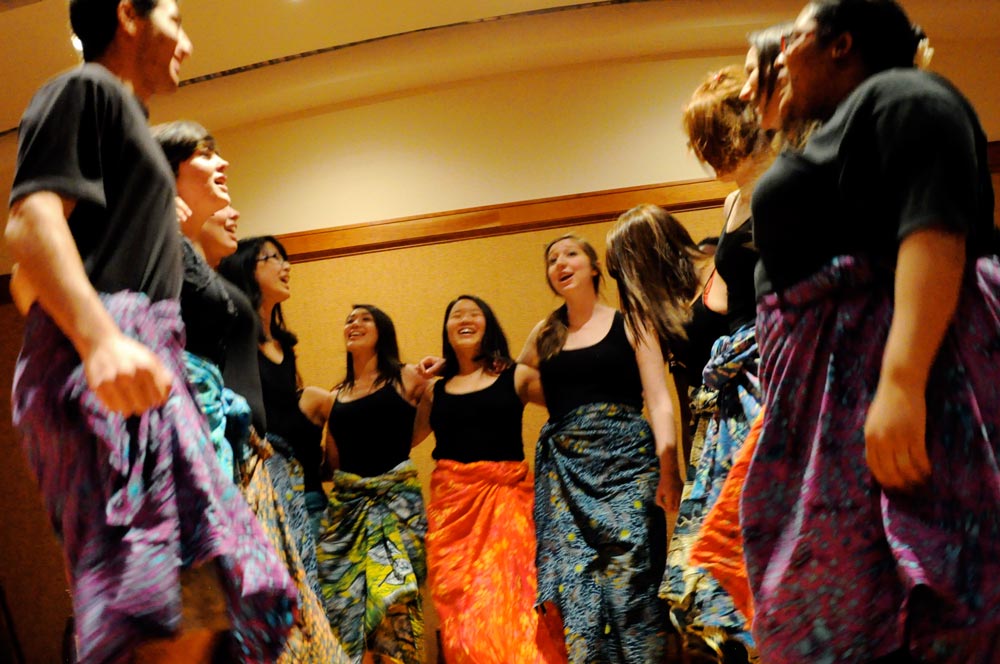
“A rehearsal begins with us all sitting on the floor in a circle with our feet together,” says Burris. “We decide what to start with, music from the Ewe people or the BaAka people. Ewe music sounds like traditional African music as we think of it in the West—lots of drumming, upbeat sounds and beautiful melodies. The BaAka music, however, is generally much more tonally complex, as it essentially involves layering infinite vocal improvisations together at once. It sounds absolutely nothing like Western music.”
“Because we all enjoyed the ensemble so much and felt that we were responsible for it, we all put in extra time,” says Camille Anoll (Col ’11). “Before the teacher even asked, students began to set up the room for class. Floors swept and everything.”
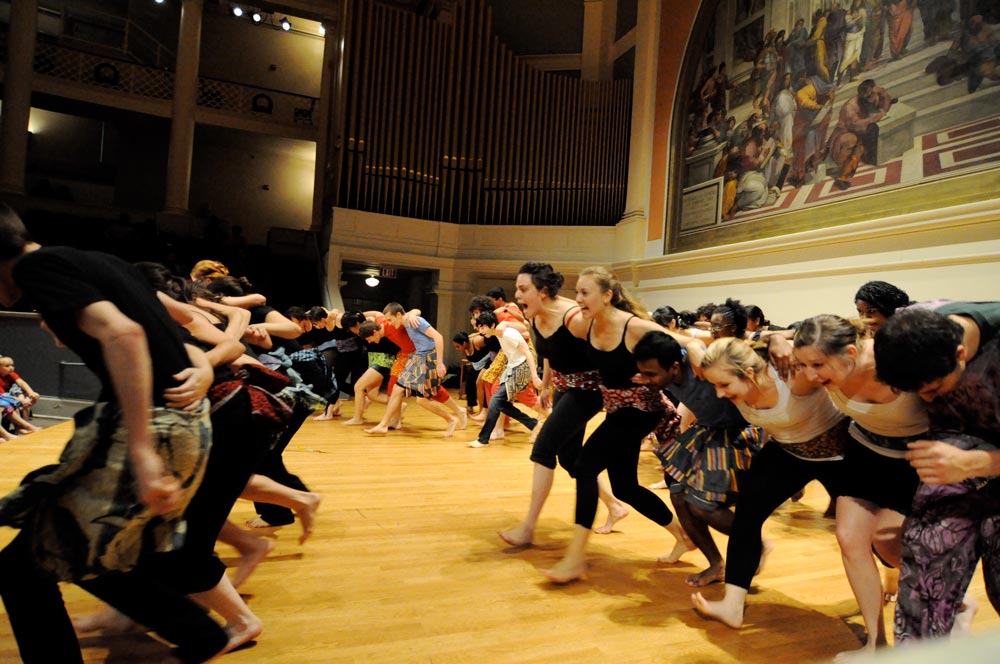
Kisliuk learned traditional music and dances firsthand, initially as a college student learning about Ewe music and traveling to Togo and Ghana, and then as a graduate student conducting research in Central African Republic in the ’80s and ’90s. She spent more than two years living among the BaAka—a largely nomadic people who survive on the resources of the rainforest and sometimes work for Bantu farmers—and was inducted into one of their traditional women’s dances by an elder dance master.
Why is it important for students in Virginia to learn music from halfway around the world? “Learning to do a task—a song or dance—requires us to submit ourselves to that task,” says Kisliuk. “We are humbled by being beginners. Submitting ourselves to learning a culture that has been dominated for so long by colonialism is a meaningful act. It confers value to ideas and practices that had been undervalued.”
Burris says learning African music and dance has broadened his musical ear and improved his improvisational capabilities, which is important for him as a jazz pianist. A music major, Burris began his education as a classical percussionist, and says that studying African drumming and polyrhythms allowed him to “get a grasp of how to keep a rhythm, as I now could hear all of the other possible rhythms that fit in the context.”
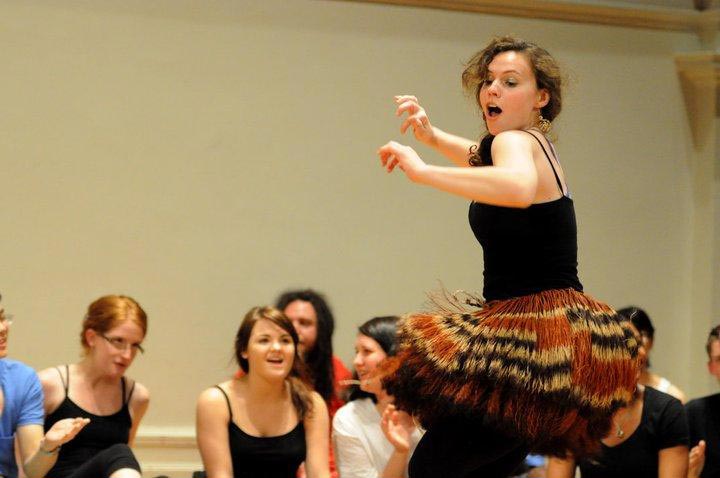
The ensemble has influenced Burris even further; he currently works as a commodities trader at Morgan Stanley and will pursue a master’s degree at Cambridge, where he will study financial markets’ impact on emerging markets, especially in Africa. “Learning about African cultures inspired me to research the economies that these cultures reside within, so I learned about the commodities industry—gold, silver, oil, rare earth metals, grains and cocoa—in Central and West Africa,” says Burris. “That has made a huge impact on my educational trajectory.”
Anoll also found the class empowering. “I have done some dancing in life, but I had always been scared of the UVA dance classes in the drama department. I finally got up the courage after several semesters in the African Music and Dance Ensemble to take Modern I and II in my fourth year and absolutely loved it.”
The ensemble holds several performances a year and invites spectators to join in the dancing and singing. Guests artists who travel from Ghana often participate in the end-of-year performances. “My hope is that everyone is empowered to learn something that was initially very foreign,” says Kisliuk, “and do it rather than just learn about it.”
